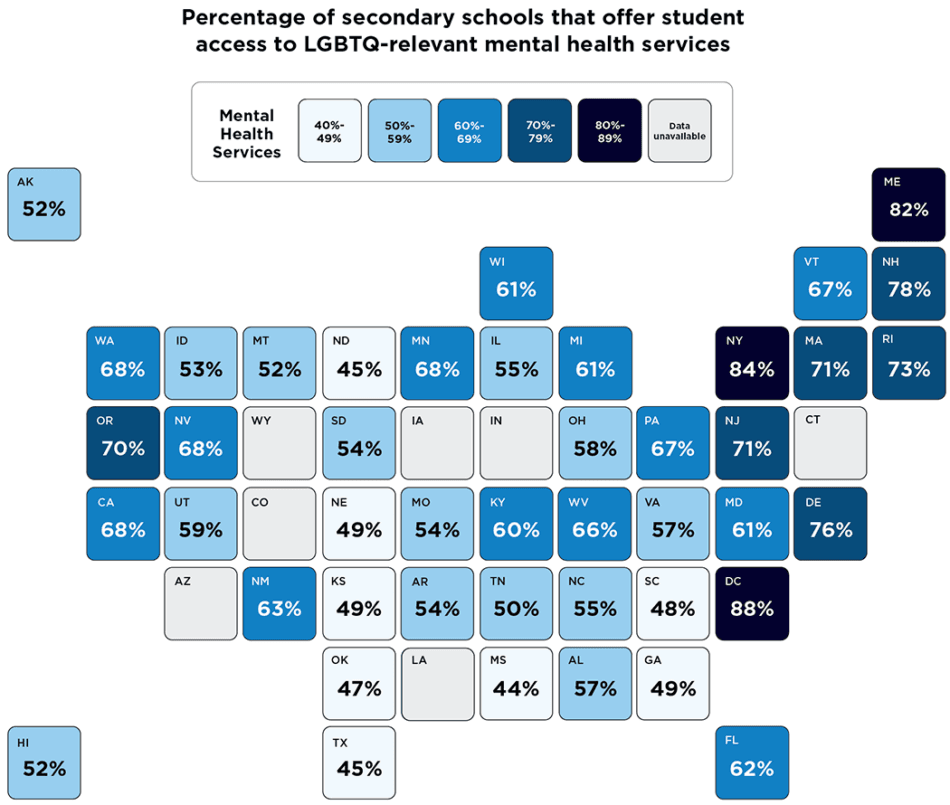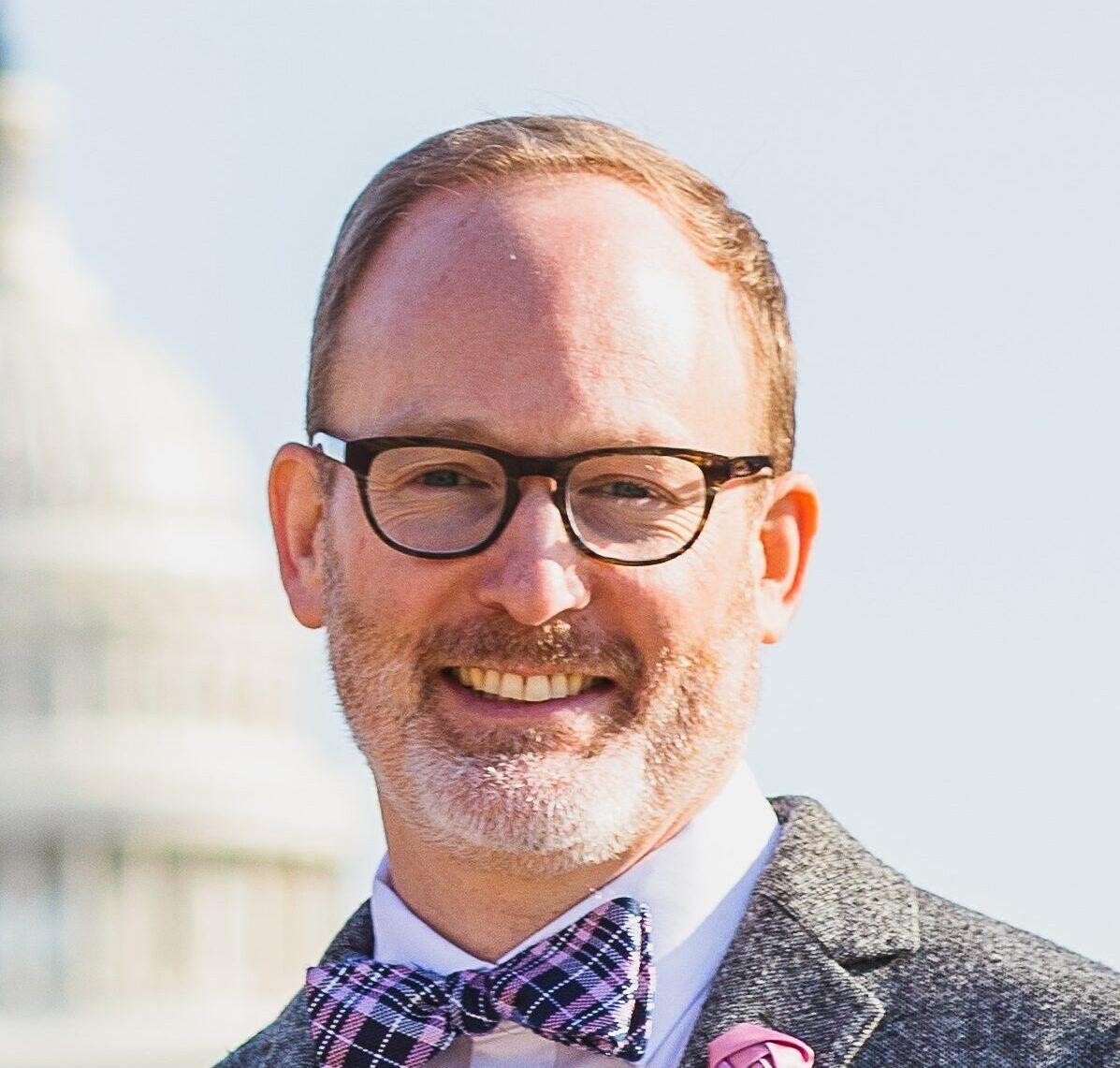According to a recent Child Trends analysis, in 2018, 35 states and the District of Columbia reported that over 50 percent of their secondary schools facilitated student access to off-campus social and psychological service providers with experience treating lesbian, gay, bisexual, transgender, queer, and/or questioning (LGBTQ) youth (see map below). These findings are derived from data from the Centers for Disease Control and Prevention (CDC) 2018 School Health Profiles, the most recent year for which data are available. The District of Columbia—a state-level equivalent for our purposes of comparison—had the highest overall percentage (88%) of schools facilitating access to services, followed by New York (84%). Conversely, in eight states, less than half of secondary schools reported facilitating access to such services. The remaining seven states reported no data. Mississippi had the lowest percentage (44%) of secondary schools facilitating access to these services for LGBTQ students.

Sources: Centers for Disease Control and Prevention. (2019). School Health Profiles 2018: Characteristics of Health Programs Among Secondary Schools. Centers for Disease Control and Prevention.
Centers for Disease Control and Prevention. (2017). School Health Profiles 2016: Characteristics of Health Programs Among Secondary Schools. Centers for Disease Control and Prevention.
While many LGBTQ youth successfully navigate adolescence, experiences of stigma and discrimination related to their sexual orientation and gender identity have been associated with greater risk of suffering from mental health problems, including substance use disorders, affective disorders, and suicide. Of particular concern, during the COVID-19 pandemic, LGBTQ youth have reported struggling to access professional mental health counseling, experiencing poor mental health as a result of the pandemic or recent anti-LGBTQ policy proposals, living in stressful situations within non-LGBTQ-affirming homes, and contemplating or attempting suicide.
Educators and policymakers must recognize the need to address the pandemic’s social, emotional, and behavioral effects on children and youth. To ensure that LGBTQ youth feel emotionally and physically safe enough to engage in mental health services, they must have access to mental health providers who affirm their identities. However, a recent study found that many school counselors feel ill-equipped to work effectively with LGBTQ students. For example, clinicians may deny services or discourage LGBTQ individuals from discussing their sexual or gender identity. Only 25 states and the District of Columbia ban the use of conversion therapy—a harmful practice that seeks to change an individual’s sexual orientation, gender identity, or gender expression—for minors.
The Substance Abuse and Mental Health Services Administration of the U.S. Department of Health and Human Services has recognized the importance of providing culturally and linguistically competent mental health services to LGBTQ youth, and has outlined these principles in a Practice Brief. To improve LGBTQ students’ access to relevant and affirming mental health care, schools must continue to expand their efforts to establish referral networks with mental health professionals in the community—especially in states where such practices are uncommon.
This blog updates our August 2019 analysis with the most recent data, from 2018.
Series
- Only 17 States and DC Report LGBTQ-Inclusive Sex Ed Curricula in at Least Half of Schools, Despite Recent Increases
- Only 9 States and DC Report That More Than Half of Secondary Schools Have a Gender and Sexuality Alliance
- State-level Data Show Schools Can Facilitate LGBTQ Students’ Access to Relevant Physical Health Services
© Copyright 2025 ChildTrendsPrivacy Statement
Newsletter SignupLinkedInYouTubeBlueskyInstagram

